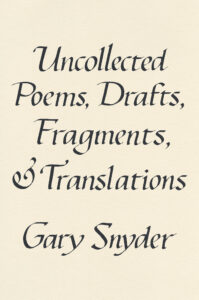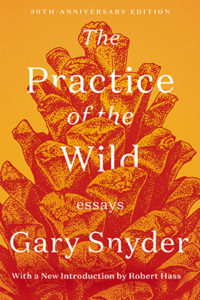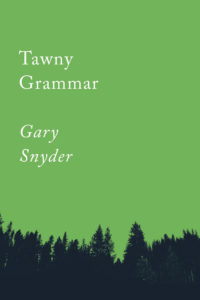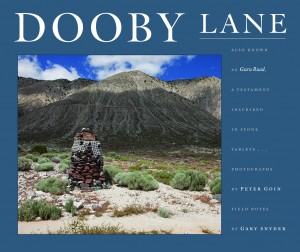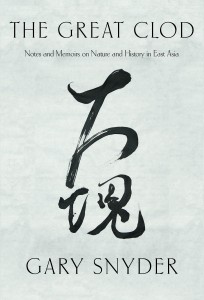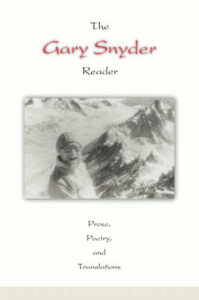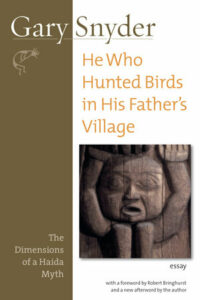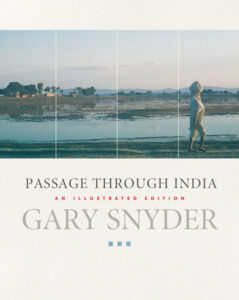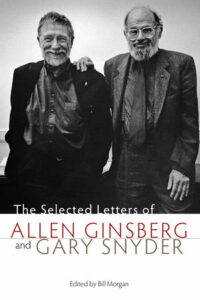Gary Snyder
GARY SNYDER is the author of more than twenty collections of poetry and prose. Since 1970, he has lived in the watershed of the South Yuba River in the foothills of the Sierra Nevada. Winner of the Pulitzer Prize in 1975, Snyder has also been awarded the Bollingen Prize for Poetry and the Robert Kirsch Award for lifetime achievement. His 1992 collection, No Nature, was a National Book Award finalist, and in 2008 he received the Ruth Lilly Poetry Prize. Snyder is a poet, environmentalist, educator, and Zen Buddhist.
Subscribe to our newsletter for news & events from Counterpoint Press.
Books
Uncollected Poems, Drafts, Fragments, and Translations
Finalist in CALIBA's 2022 Golden Poppy Book AwardsA collection of previously uncollected and unpublished works by a Pulitzer Prize-winning Beat poet Gary Snyder, written during his most productive and important years
Far from being a simple miscellany of poems, Uncollected Poems, Drafts, Fragments, and Translations contains some of Gary Snyder’s best work, written during his most productive and important years.
Many of these have been published in magazines or as broadsides, including Spel Against Demons, Dear Mr. President, Hymn to the Goddess San Francisco, Smokey the Bear Sutra, A Curse on the Men in Washington, Pentagon. The collection also includes a great number of translations from Chinese and Japanese poets. Much of this work has been gleaned from journals, manuscripts and correspondence, and never before published in any form.
The Practice of the Wild
Essays
A collection of captivatingly meditative essays that display a deep understanding of Buddhist belief, wildness, wildlife, and the world from an American cultural force.With thoughts ranging from political and spiritual matters to those regarding the environment and the art of becoming native to this continent, the nine essays in The Practice of the Wild display the deep understanding and wide erudition of Gary Snyder. These essays, first published in 1990, stand as the mature centerpiece of Snyder's work and thought, and this profound collection is widely accepted as one of the central texts on wilderness and the interaction of nature and culture.
Tawny Grammar
Essays
Two beautifully paired essays, “Tawny Grammar” and “Good, Wild, Sacred," serve to offer an autobiographical framework for Gary Snyder's long work as a poet, environmentalist, and a leader of the Buddhist community in North America.He begins standing outside a community hall in Portland, Oregon, in 1943 and concludes as a homesteader in the backcountry of Northern California more than forty–five years later. A wonderful introduction to Gary Snyder, this will also serve to remind his faithful readers of the thrill of his insights and his commitments crucial to our future on Turtle Island.
Each palm–size book in the Counterpoints series is meant to stay with you, whether safely in your pocket or long after you turn the last page. From short stories to essays to poems, these little books celebrate our most–beloved writers, whose work encapsulates the spirit of Counterpoint Press: cutting–edge, wide–ranging, and independent.
Dooby Lane
Also Known as Guru Road, A Testament Inscribed in Stone Tablets by DeWayne Williams
If left alone, what might a place say? If we must leave it, what must we leave behind? Guru Road, Dooby Lane. It was in this place where, nearly twenty years ago, Gary Snyder discovered, considered, and chronicled such latitudinal ruminations by way of one man, DeWayne "Dooby" Williams, and the coalesced stories and tributes which Williams faithfully etched upon granite, his elected canvas. When Snyder and his wife, Carole, were camping along the Black Rock playa, northwest of the Great Basin and northeast of the town of Gerlach, they deviated from their journey down a paved path to explore a little dirt road that glinted with intrigue. This spontaneous decision led Snyder to "this remarkable text of life and spirit" and to Williams who, retired and living with cancer, was creating the testament of a lifetime—that which would transcend corporeal measures and touch the lives of countless people in endless moments for many years to come.DeWayne Williams created this work of Earth Art in the Black Rock desert, near the current site of the Burning Man gathering. This full–color book presents a series of photographs by Peter Goin, accompanied by the prose and poetry of Gary Snyder.
The Great Clod
Notes and Memoirs on Nature and History in East Asia
For the full course of his remarkable career, Gary Snyder has continued his study of Eastern culture and philosophies. From the Ainu to the Mongols, from Hokkaido to Kyoto, from the landscapes of China to the backcountry of contemporary Japan, from the temples of Daitokoji to the Yellow River Valley, it is now clear how this work has influenced his poetry, his stance as an environmental and political activist, and his long practice of Zen. Growing up in the Pacific Northwest, Asia became a vocation for Snyder. While most American writers looked to the capitals of Europe for their inspiration, Sndyer looked East. American letters is profoundly indebted to this geographical choice.Long rumored to exist, The Great Clod collects more than a dozen chapters, several published in The Coevolution Quarterly almost forty years ago when Snyder briefly described this work as "The China Book," and several others, the majority, never before published in any form. "Summer in Hokkaido," "Wild in China," "Ink and Charcoal, " "Stories to Save the World," "Walking the Great Ridge," these essays turn from being memoirs of travel to prolonged considerations of art, culture, natural history and religion. Filled with Snyder's remarkable insights and briskly beautiful descriptions, this collection adds enormously to the major corpus of his work, certain to delight and instruct his readers now and forever.
Zen Pioneer
The Life and Works of Ruth Fuller Sasaki
Ruth Fuller Sasaki, who died in 1967, was a pivotal figure in the emergence and development of Zen Buddhism in the United States. She is the only Westerner — and woman — to be made a priest of a Daitoku–ji temple and was mentor to Burton Watson, Philip Yampolsky, and Gary Snyder, and mother–in–law of Alan Watts. This is the first biography of her remarkable life.Few devoted their lives to Zen Buddhism as Ruth Fuller did. As a senior student of Sokei — an Sasaki in New York — Ruth helped him develop the infrastructure of what would eventually become The First Zen Institute in New York City. She married Sasaki in 1944, and it was her mission to maintain the Institute and later, to establish The First Zen Institute of America in Japan. Her legacy remains today in the Zen facilities she helped build in New York and abroad and in the many texts she saw through translation, published from the 1950s to the 1970s. For the first time in book form, three of her writings are included here — Zen: A Religion, Zen: A Method for Religious Awakening, and Rinzai Zen Study for Foreigners in Japan.
Back on the Fire
Essays
This collection of essays by Gary Snyder, now in paperback, blazes with insight. In his most autobiographical writing to date, Snyder employs fire as a metaphor for the crucial moment when deeply held viewpoints yield to new experiences, and our spirits and minds broaden and mature. Snyder here writes and riffs on a wide range of topics, from our sense of place and a need to review forestry practices, to the writing life and Eastern thought. Surveying the current wisdom that fires are in some cases necessary for ecosystems of the wild, he contemplates the evolution of his view on the practice, while exploring its larger repercussions on our perceptions of nature and the great landscapes of the West. These pieces include recollections of his boyhood, his involvement with the literary community of the Bay Area, his travels to Japan, as well as his thoughts on American culture today. All maintain Snyder's reputation as an intellect to be reckoned with, while often revealing him at his most emotionally vulnerable. The final impression is holistic: We perceive not a collection of essays, but a cohesive presentation of Snyder's life and work expressed in his characteristically straightforward prose.The Gary Snyder Reader
Prose, Poetry, and Translations
Gary Snyder has been a major cultural force in America for five decades—prize–winning poet, environmental activist, Zen Buddhist, earth–householder, and reluctant counterculture guru. This monumental collection gathers the essays, travel journals, letters, poems, and translations of one of the most influential voices of the twentieth century.He Who Hunted Birds in His Father’s Village
The Dimensions of a Haida Myth, With a Foreword by Richard Bringhurst and a New Afterword by the Author
In 1951, as a student of anthropology in Oregon, Gary Snyder set himself to the task of analyzing the many levels of meaning a single Native American myth might hold. He Who Hunted Birds in His Father's Village is the result of Snyder's critical look at a Haida tale that was told by the great oral poet Ghandl (Walter McGregor) to John Swanton sometime before 1905. A version of the ubiquitous "swan maiden" story, it tells of a chief's son who falls in love with a wild goose–girl, loses her, follows her into the sky, and returns to land as a seagull. Snyder goes deep into the transformations that occur in the myth, considering versions of myth from around the world, and explaining how the story might apply here and now. He writes:To go beyond and become what–a seagull on a reef? Why not. Our nature is no particular nature; look out across the beach at the gulls. For an empty moment while their soar and cry enters your heart like sunshaft through water, you are that, totally. We do this every day. So this is the aspect of mind that gives art, style, and self–transcendence to the inescapable human plantedness in a social and ecological nexus. The challenge is to do it well, by your neighbors and by the trees, and that maybe once in a great while we can get where we see through the same eye at the same time, for a moment. That would be doing it well. Old tales and myths and stories are the k_ans of the human race.
Passage Through India
An Expanded and Illustrated Edition
In 1962 Gary Snyder, with his wife, the poet Joanne Kyger, joined Allen Ginsberg and his companion Peter Orlovsky for a long trip to India and surrounding countries. As always, Snyder kept extensive journals of his travels and, in this particular case, also wrote the whole account in one long letter to his sister. It was an amazing trip, and one that eventually took on legendary status as an iconic Beat Voyage. Complete with slides and photographs, Passage Through India takes us on a journey that transcends time.Opening the Mountain
Circumabulating Mount Tamalpais, A Ritual Walk
In 1965, Allen Ginsberg, Gary Snyder and Philip Whalen gathered at the base of Mt. Tamalpais, a lovely small mountain in Marin County that anchors the San Francisco Bay on its northwest side. Inspired by Tibetan and Indian practices of walking clockwise--"the way of the sun"--around a venerated object, they "opened the mountain" by completing the first circumambulation. They did it again two years later, a month after the "Human Be-in" in Golden Gate Park, and with greater company as they invited the public to join them. The practice has continued almost uninterrupted for forty years, with Matthew Davis finding an organizing role on April 8, 1971, the Buddha's birthday, when he first led the walk. He has led the celebrations more than 140 times since.The ritual walk--slightly less than 15 miles in length--marks the four quarters of the year. Ten way stations have been established for ceremonial chanting and prayer. With 80 remarkable photographs by Michael Farrell Scott, lovely drawings and maps, chants and poems, this book documents not only this particular spiritual practice but offers guidance for others wishing to establish similar practices in their own areas.
The Selected Letters of Allen Ginsberg and Gary Snyder
One of the central relationships in the Beat scene was the long–lasting friendship of Allen Ginsberg and Gary Snyder. Ginsberg introduced Snyder to the East Coast Beat writers, including Jack Kerouac, while Snyder himself became the model for the serious poet that Ginsberg so wanted to become. Snyder encouraged Ginsberg to explore the beauty of the West Coast and, even more lastingly, introduced Ginsberg to Buddhism, the subject of so many long letter exchanges between them. Beginning in 1956 and continuing through 1991, the two men exchanged more than 850 letters. Bill Morgan, Ginsberg's biographer and an important editor of his papers, has selected the most significant correspondence from this long friendship. The letters themselves paint the biographical and poetic portraits of two of America's most important—and most fascinating—poets. Robert Hass' insightful introduction discusses the lives of these two major poets and their enriching and moving relationship.
Catapult | Counterpoint | Soft Skull
20 Jay Street #704
Brooklyn, NY 11201
646.926.0805 | contact@catapult.co





